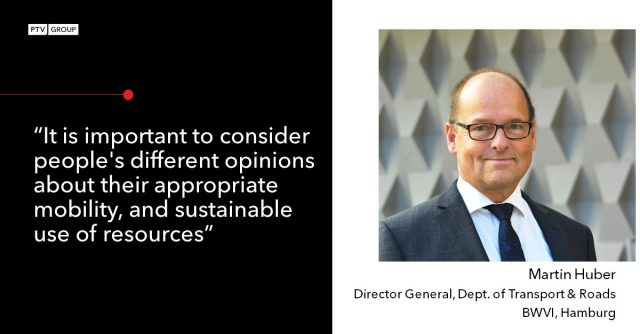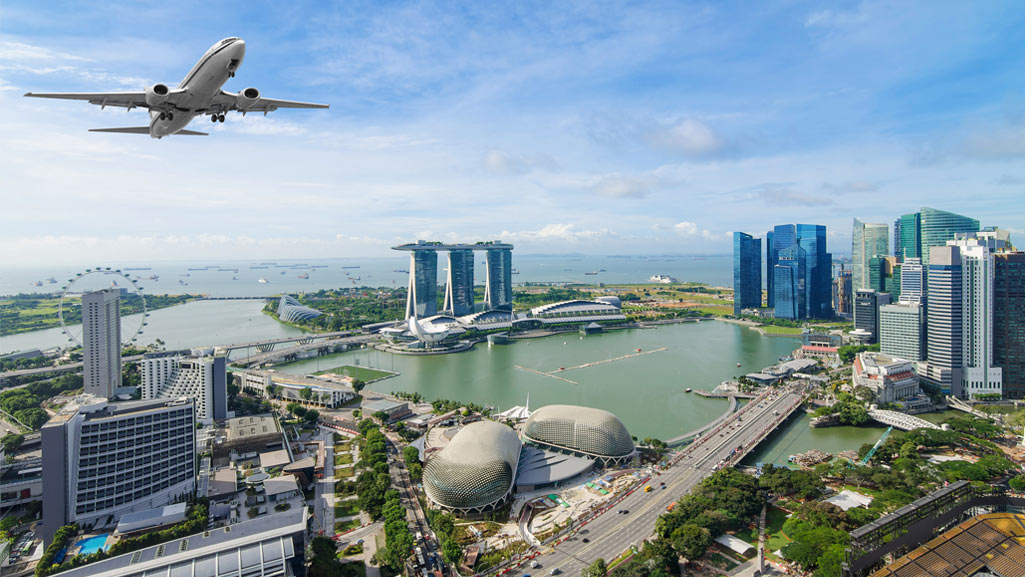Public transport, congestion, new mobility, pollution, road safety: cities need a masterful orchestration of transport modes to deal with these urban mobility challenges. How can they make use of technological advancements and embrace efficient solutions?
A major city like Singapore, for example, where this year’s ITS World Congress 2019 takes place, manages a huge number of rides every day. On average, its busses and trains carried 7.54 million passengers a day in 2018; its taxis performed an additional 650,000 rides a day. The urban mobility solutions that Singapore offers are also put to the test during major international events, such as ITS World Congress.
So how can cities use technology for efficient, inclusive urban mobility solutions for all? In our workshop on Orchestrating Mobility in Smart Cities at ITS World Congress, we will explore with you the topics of connectivity, data and traffic prediction. Our guests from academia, automotive sector, consulting services and the public sector will present global examples of progress and challenges. This will be followed by a discussion and networking opportunity – plenty of time to join the conversation and share your best practices.
Ahead of this event, we’ve asked our speakers about current transport challenges, and effective urban mobility solutions for them.
Connectivity is key for city mobility
 “Multimodal transport management and safety are the major challenges in cities, in both developed and developing countries,” says Prof. Majid Sarvi, the chair of Transport Engineering at the University of Melbourne.
“Multimodal transport management and safety are the major challenges in cities, in both developed and developing countries,” says Prof. Majid Sarvi, the chair of Transport Engineering at the University of Melbourne.
“Many cities around the world struggle to manage a wholistic multimodal transport system. Travelers, however, only see one system which gets them from A to B. For them, a good system is one that provides this basic functionality in the safest way.
“Additionally, because of a rapid rate of urbanisation and a new wave of micro-mobilities, the number of conflicts in cities is skyrocketing, damaging the essential safety of the transport system. Many cities witness a strong increase in accidents and crashes, particularly those affecting vulnerable road users – pedestrians, cyclists, bikers, etc.
“A whole system approach and connectivity are the key to solving this. Through a connected infrastructure and transport system, we can tackle these issues in an effective way. The data that is missing to manage the system can be harvested through effective connectivity; the safety of the system could significantly improve using effective and systematic connectivity (e.g. DSRC, 5G, WIFI).
Prof. Sarvi describes one of the urban mobility solutions he knows well: “A good example is the project AIMES (Australian Integrated Multimodal EcoSystem) in Melbourne, which I founded and direct. We created a ground-breaking system that connects all modes of transport and infrastructure. It has shown how effectively one could use such a system to reduce network congestion as well as improve safety for vulnerable road users.”
Consider people’s different opinions
 Martin Huber heads the Department for Transport and Roads of the German City-State of Hamburg. He is responsible for Hamburg’s rail, road and airport infrastructure, as well as planning of public transport. One of his personal goals is to adapt Hamburg’s transport systems to the digital era.
Martin Huber heads the Department for Transport and Roads of the German City-State of Hamburg. He is responsible for Hamburg’s rail, road and airport infrastructure, as well as planning of public transport. One of his personal goals is to adapt Hamburg’s transport systems to the digital era.
“Hamburg is a hub for freight flows in northern and central Europe. It is important to take advantage of this location by improving the integration into the traffic flows, in the interest of the city and its large hinterland.
“Hamburg systematically upgrades large city areas. Traffic route planning will accompany the modernization of the city and provide new solutions.
“In doing so, it is important to consider people’s different opinions about their appropriate mobility, sustainable use of resources, and the effort to reduce impact of traffic on nature and the environment.
“Those who want the right answers for the long term, must meet the people in Hamburg, take them seriously during planning processes and provide ‘weaker’ road users with good and safe options.
“For these reasons, we are proud that Volkswagen chose Hamburg to launch the MOIA ride-sharing service. We believe the new service increases the citizens’ accessibility to transport and the efficiency of the city’s entire public transport system.”
Industry and cities need to join forces

“Cities have different problems and needs considering mobility. Let it be emissions and pollutions, congestion and space, the ongoing technology transformation – or everything at once”, says Chong Lee, Head of Urban Solutions at Volkswagen Group.
“Volkswagen Group is implementing the most extensive global electrification campaign in the automotive industry. We will offer around 70 new fully electric vehicles by 2028. In addition, Volkswagen aims to offer a broad range of electric vehicles: From an electric kick scooter via a cargo e-bike to electric busses.
“On top of this individual e-mobility portfolio, Volkswagen launched the electric ride sharing service MOIA and the electric car sharing service WeShare. But we don’t stop here. We offer charging solutions, green energy solutions and consulting services for electric mobility.
“Despite this broad range of solutions, we think that we can only be successful if we work together, especially with cities.”
Accurate prediction for city mobility

“As people around the world move into large cities, the demand for smart innovative technologies increases”, says Omid Ejtemai, PTV Group’s Regional Managing Director for Asia-Pacific. “with growing density, cities are faced with several challenges to improve the efficiencies and cost-effectiveness. In Australia alone, the cost of congestion is expected to reach $53.3 billion by 2030.
In his vision for urban mobility solutions, Ejtemai says “technology is the enabler that can help city authorities with a large infrastructure buffer and improve the quality of life for residents. But cities are diverse and have different policies and infrastructure. So these new smart technologies need to be configured and used in different ways.”
“To achieve a well-integrated and connect city, a holistic design and planning is therefore needed. While data is a constant across all projects, in many cases, AI technologies can help understand the relationships between the characteristics of the transportation system.
“This includes utilization of accurate prediction and detection models to better forecast traffic conditions and incidents. Integrating short term forecasting technologies into city traffic management centres significantly improves city’s ability to proactively manage congestion. It also enables authorities to collaborate and coordinate across mobility ecosystem, and provide the travellers with timely, accurate, adequate and relevant journey planning information.”
Collect data from networks

Paul Hutton of the UK-based Hemming Group is a writer and broadcaster on transportation issues, and editor of Smart Highways magazine. He will moderate the workshop in Singapore.
“I came into the ITS industry through radio, where our job was to warn people of accidents and traffic jams”, says Hutton, “This brought it home to me how inefficient we are in making the best use of road capacity. I would look at traffic cameras, or fly over a city, and see how some roads were jammed while others were quiet. All around the world, people go the way they know and are averse to taking alternatives.
“This is partly being solved through sat navs that re-route people and online information services. However, road authorities have little control on the advice drivers are getting and are therefore always playing catch-up with how traffic is load levelling in real time.
“PTV Optima uses live traffic information with transport modelling to predict what will happen in the next half hour, run scenarios to mitigate against traffic jams and help authorities implement solutions for problems before they happen. This involves changing the phasing of traffic lights and advising of alternative routes. It has been shown to improve journey times by up to 20%, reduce emissions and improve air quality.
“This is an excellent way to ‘sweat the asset’ of our networks and get more efficient mobility without building extra roads or spend a lot of money on infrastructure changes.”



